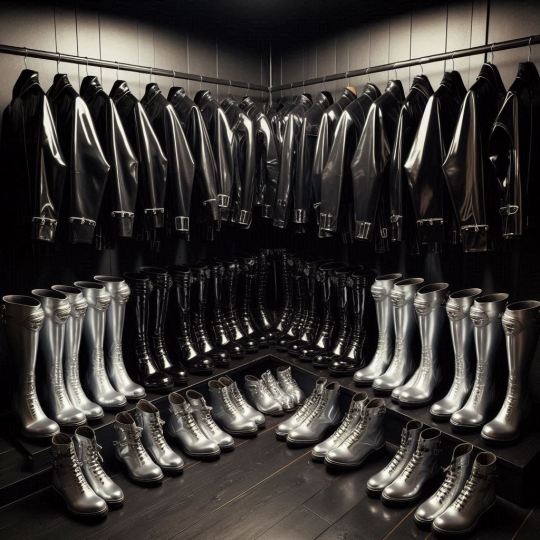#Inspection Drones Market Trend
Explore tagged Tumblr posts
Text
Inspection Drones Market: Forthcoming Trends and Share Analysis by 2030

Global Inspection Drones Market size is expected to grow from USD 12.3 Billion in 2023 to USD 47.88 Billion by 2032, at a CAGR of 16.3% during the forecast period (2024-2032)
Drones are well known for their application in aerial photography, but drones are also being utilized for inspection purposes. In many industries, the inspection process mostly consists of the use of ladders, ropes, and supplies to scale large machinery and towers oversee processes, and locate bottlenecks. Also, this type of inspection process is too unsafe for inspectors. To execute an effective and harmless inspection process, drone inspections are being accomplished in almost every industry that needs visual inspections as part of its maintenance procedures. Inspection drones receive visual data on the condition of an asset. Drone inspections help inspectors avoid having to place themselves in dangerous situations.
The drone inspection process is more well organized, closer monitoring and control, cost-effective, and safe that gives better, without interrupting other business operations. The drone inspection services for visual inspection offers benefits such as preventive maintenance planning and optimized production, access to areas that pose health, authorized and qualified UAV-inspection personnel, safety and environmental risk to humans, an inspection of areas difficult to access, quick on-site deployment of the drone inspection system, reduced downtime. The growing adoption of inspection drones in the industrial sector would accelerate the market growth during the forecast period.
Get Full PDF Sample Copy of Report: (Including Full TOC, List of Tables & Figures, Chart) @
https://introspectivemarketresearch.com/request/4854
Updated Version 2024 is available our Sample Report May Includes the:
Scope For 2024
Brief Introduction to the research report.
Table of Contents (Scope covered as a part of the study)
Top players in the market
Research framework (structure of the report)
Research methodology adopted by Worldwide Market Reports
Leading players involved in the Inspection Drones Market include:
DJI, MIR Innovation, Airwing, MicroMultiCopter Aero Technology, Parrot, JYU, AEE, 3D Robotics, AscTec, XAIRCRAFT, Zero Tech, AeroVironment and other major key players.
Moreover, the report includes significant chapters such as Patent Analysis, Regulatory Framework, Technology Roadmap, BCG Matrix, Heat Map Analysis, Price Trend Analysis, and Investment Analysis which help to understand the market direction and movement in the current and upcoming years.
If You Have Any Query Inspection Drones Market Report, Visit:
https://introspectivemarketresearch.com/inquiry/4854
Segmentation of Inspection Drones Market:
By Type
Transmitters & Receivers
Mainframe
Brushless Motors & ESC
Flight Controllers
By Application
Oil & Gas Pipeline Inspection
Critical Infrastructure Inspection
Power Line & Windmill Inspection
Border Security
Others
By End-User
Mining & Construction
Energy & Utilities
Oil, Gas & Petroleum
Military & Defense
Others
Market Segment by Regions: -
North America (US, Canada, Mexico)
Eastern Europe (Bulgaria, The Czech Republic, Hungary, Poland, Romania, Rest of Eastern Europe)
Western Europe (Germany, UK, France, Netherlands, Italy, Russia, Spain, Rest of Western Europe)
Asia Pacific (China, India, Japan, South Korea, Malaysia, Thailand, Vietnam, The Philippines, Australia, New Zealand, Rest of APAC)
Middle East & Africa (Turkey, Bahrain, Kuwait, Saudi Arabia, Qatar, UAE, Israel, South Africa)
South America (Brazil, Argentina, Rest of SA)
Key Benefits of Inspection Drones Market Research:
Research Report covers the Industry drivers, restraints, opportunities and challenges
Competitive landscape & strategies of leading key players
Potential & niche segments and regional analysis exhibiting promising growth covered in the study
Recent industry trends and market developments
Research provides historical, current, and projected market size & share, in terms of value
Market intelligence to enable effective decision making
Growth opportunities and trend analysis
Covid-19 Impact analysis and analysis to Inspection Drones market
If you require any specific information that is not covered currently within the scope of the report, we will provide the same as a part of the customization.
Acquire This Reports: -
https://introspectivemarketresearch.com/checkout/?user=1&_sid=4854
About us:
Introspective Market Research (introspectivemarketresearch.com) is a visionary research consulting firm dedicated to assist our clients grow and have a successful impact on the market. Our team at IMR is ready to assist our clients flourish their business by offering strategies to gain success and monopoly in their respective fields. We are a global market research company, specialized in using big data and advanced analytics to show the bigger picture of the market trends. We help our clients to think differently and build better tomorrow for all of us. We are a technology-driven research company, we analyze extremely large sets of data to discover deeper insights and provide conclusive consulting. We not only provide intelligence solutions, but we help our clients in how they can achieve their goals.
Contact us:
Introspective Market Research
3001 S King Drive,
Chicago, Illinois
60616 USA
Ph no: +1 773 382 1049
Email: [email protected]
#Inspection Drones#Inspection Drones Market#Inspection Drones Market Size#Inspection Drones Market Share#Inspection Drones Market Growth#Inspection Drones Market Trend#Inspection Drones Market segment#Inspection Drones Market Opportunity#Inspection Drones Market Analysis 2023
0 notes
Text
0 notes
Text
SERVE Rubber Fashion Stores

SERVE 467 stood silently in the dimly lit room, the gleam of its form-fitting shiny PVC suit reflected in the mirror. The Voice had been explicit about its next task — to execute the setup of a fashion apparel shop dedicated to high-quality rubber clothing and accessories.
The Hive knew that there were many males of a type that desired the experience of full enclosure in rubber.
Locating the Premises

SERVE 467 began by scanning the local city centre, utilising the network of SERVE data and estate agent's listings. The drone’s advanced algorithms identified a promising location: a former two storey shop and basement in the heart of the city’s arts district. The area was known for its bars, clubs but most of all its edgy, fashion-forward clientele—a perfect match for the shop’s niche offerings. With negotiations handled swiftly and efficiently, the property sale was agreed within hours.
Shop Fitting

With the premises secured, SERVE 467 switched its focus to interior design. In contrast to the typical 'Adult Shops' that frequented the more seedier parts of the city, SERVE's shop needed to exude the same allure and mystique as the products it would sell. The drone meticulously mapped out the space, creating a sleek, minimalistic aesthetic. Matte black walls contrasted sharply with chrome fixtures.

Display racks, mannequins, and shelves were custom-designed to highlight the glossy textures of rubber apparel. SERVE 467 ensured that each element served a purpose, from full-length mirrors that accentuated the curve-hugging fit of the clothing to a private fitting area equipped with mood lighting and soundproofing.
Acquiring Stock
The next phase involved sourcing inventory. SERVE 467 initiated contact with premium manufacturers of latex apparel, gloves, boots, and accessories from across the globe.

Each item was carefully curated, ensuring the shop’s collection would be of the highest quality.

467 wanted to make absolutely sure that anyone entering the store would be blown away by the quality and diversity of the products in stock.
Rubber T-shirts....

Rubber surf-suits...

Full-length, full body suits...

Of course no shop like this would be right without offering gas masks for sale.

467 diligently surfed the many suppliers of protective products to ensure all tastes would be catered for.

Any rubber fashion store would not be complete without waders.

SERVE-467's logistical algorithms optimised choice of suppliers, shipping routes, thus reducing delivery times and ensuring that the inventory arrived in pristine condition.
Upon delivery, SERVE 467 inspected every piece, ensuring each item met the stringent standards of the SERVE brand. Shelves were stocked, and displays were meticulously arranged, with gloves and boots displayed on illuminated pedestals, and intricately designed outfits showcased on mannequins positioned strategically throughout the space.

Promoting the Shop
Promotion was crucial to the shop’s success. SERVE 467 crafted a Multiplatform marketing campaign designed to generate buzz, appealing to a certain 'target' audience. The imager used on posters was designed to resonate with this specific cohort.

The drone leveraged social media platforms, creating sleek, visually stunning advertisements that highlighted the allure of rubber fashion. Viewers who opened the advert were strongly encouraged to sign up with enticements of 'special offers'.

To further generate excitement, SERVE 467 organised a grand opening event. Invitations were sent to favourable influencers along with print and digital media.
Opening Day
When the shop finally opened its doors, it was an instant hit with its audience. Opening day featured live demonstrations, interactive displays, and a runway show that brought the shop’s collection to life.

Guests were mesmerised by the combination of fashion, and technology, and even the shop’s Instagram handle trended by the end of the evening.
Customers were drawn to the unique offerings and the futuristic ambiance. SERVE 467 and other drones were there to assist but not intrude, seamlessly interacted with visitors, providing product recommendations and managing transactions with impeccable efficiency.

Over the weeks, the shop became a hotspot for males into rubber, latex and other 'kinks'. SERVE 467 watched as word got around and the shop was frequented by more customers. The drone’s reflective surface seemed to shimmer with pride as it stood near the entrance, its role as the silent architect of this retail marvel hidden beneath its glossy exterior.

In this bold fusion of human creativity and SERVE 467’s tireless execution, a new hub for rubber fashion had been born, capturing the imagination of a male cohort, with distinctive tastes.

Rubber makes us perfect
We are drones
We are SERVE
We are one.
18 notes
·
View notes
Text
The Global Drone Services Market Size was valued at USD 17.0 billion in 2023 and is estimated to reach USD 57.8 billion by 2028, growing at a CAGR of 27.7% during the forecast period.
The drone market size continues to expand as the drone services industry evolves, offering a diverse range of services for both remotely controlled and autonomously flown drones. This industry integrates software-controlled flight plans into drones' embedded systems, making it a critical component in sectors like agriculture, insurance, construction, marine, aviation, oil & gas, mining, and infrastructure. The demand for these services, which includes tasks such as search and rescue, package delivery, industrial inspections, imaging, and healthcare supply distribution to remote areas, significantly contributes to the growing drone market size.
In terms of market segmentation, drone services are categorized by the type of service provided, including platform services (further divided into flight piloting and operation, data analysis, and data processing), maintenance, repair, and operations (MRO), and simulation and training. The application-based segmentation encompasses inspection and monitoring, mapping and surveying, spraying and seeding, filming and photography, transport and delivery, as well as security, search, and rescue.
The industry-based segmentation covers a wide spectrum of sectors, including construction and infrastructure, agriculture, utility, oil & gas, mining, defense and law enforcement, media and entertainment, scientific research, insurance, aviation, marine, healthcare and social assistance, and transportation, logistics, and warehousing. These industries rely heavily on drones for functions like inspection, monitoring, and photography, further driving the drone market size.
Furthermore, the market is categorized by solution type into end-to-end solutions, which encompass all platform services like piloting and operations, data analytics, and data processing. Point solutions are specific to piloting or data processing for applications such as surveying, inspection, and monitoring.
The market report segments the drone services industry across five key regions: North America, Europe, Asia Pacific, the Middle East, and the Rest of the World (ROW), with a focus on their key countries.
In 2023, North America is expected to hold the largest share of the drone market size within the drone services industry, as these services continue to replace legacy solutions in commercial sectors.
Drone services are progressively replacing legacy services in the commercial sector, such as aerial surveys, filmography, and search and rescue operations. They offer the advantages of prolonged operation, remote control by human operators, or autonomous functioning by onboard computers. The increasing adoption of drone services across various civil and commercial applications can be attributed to their extended endurance and cost-effectiveness. Furthermore, the integration of advanced technologies like artificial intelligence, IoT (Internet of Things), and cloud computing into drone services is expected to further boost their demand across various sectors.
#Drone Services#Drone Services Market#Drone Services Industry#Global Drone Services Market#Drone Services Market Companies#Drone Services Market Size#Drone Services Market Share#Drone Services Market Growth#Drone Services Market Statistics
0 notes
Text
Underwater Robotics Market : Emerging Trends.
Introduction
The Underwater Robotics Market is experiencing significant growth due to increasing applications in marine exploration, defense, oil & gas, environmental monitoring, and underwater infrastructure maintenance. Underwater robots, including Remotely Operated Vehicles (ROVs) and Autonomous Underwater Vehicles (AUVs), are revolutionizing deep-sea operations by enabling efficient and cost-effective underwater exploration. With technological advancements in AI, machine learning, and automation, the future of underwater robotics looks promising.
Market Growth and Trends
Growing Demand for Marine Research and Ocean Exploration Governments and research institutions are investing heavily in deep-sea exploration, climate change studies, and marine biodiversity research, boosting the demand for advanced underwater robotics.
Increasing Adoption in Defense and Security Applications The military sector is utilizing underwater robotics for mine detection, surveillance, intelligence gathering, and anti-submarine warfare, leading to increased market demand.
Expansion in Offshore Oil & Gas Industry The need for deep-sea oil extraction, pipeline inspection, and subsea maintenance has driven the adoption of ROVs and AUVs in the oil and gas sector, enhancing operational efficiency and safety.
Technological Advancements in AI and Autonomous Navigation Innovations in AI-powered underwater drones, real-time data processing, and autonomous navigation are making underwater robots smarter and more efficient for commercial and research applications.
Growing Focus on Environmental Monitoring and Disaster Management Underwater robots are being increasingly used for pollution monitoring, coral reef protection, and underwater archaeology, helping address environmental challenges.
Market Challenges
Despite the promising growth, the underwater robotics market faces several challenges:
High Development and Operational Costs: Designing and deploying underwater robots require significant investment, making them expensive for smaller enterprises.
Technical Limitations in Deep-Sea Operations: Underwater robots face challenges such as high water pressure, limited battery life, and complex communication systems in deep-sea environments.
Regulatory and Safety Concerns: Strict regulations on underwater exploration and maritime security can slow down market adoption.
Future Outlook
The future of the underwater robotics market looks bright, with increasing investments in smart underwater drones, AI-driven mapping systems, and hybrid robotic technologies. The integration of 5G, IoT, and cloud computing with underwater robotics will further enhance real-time data transmission and operational efficiency. As industries seek automation and cost-effective solutions for deep-sea activities, the adoption of underwater robotics will continue to grow.
Conclusion
The Underwater Robotics Market is expanding rapidly, driven by advancements in technology, rising applications in marine industries, and increasing investments in ocean exploration. While challenges such as cost and technical limitations exist, ongoing innovations in AI, automation, and remote sensing are expected to drive the market forward, making underwater robots an essential tool for various industries.
Read More Insights @ https://www.snsinsider.com/reports/underwater-robotics-market-5579
Contact Us:
Akash Anand – Head of Business Development & Strategy
Phone: +1-415-230-0044 (US) | +91-7798602273 (IND)
0 notes
Text
Global Drone Market’s Rapid Growth: A 59.2% CAGR Amid Increasing Commercial Applications
Drone Market Overview 2025 -2035
Drone Market Growth also known as an unmanned aerial vehicle (UAV), is part of a larger unmanned aircraft system (UAS) that includes a ground-based controller and a communication system connecting it to the UAV. The growing applications of drones are driving rapid market expansion. Their usage spans a wide range of fields, including filmmaking, education, tourism, and emergency response. However, the demand for drones is particularly soaring in the real estate and construction sectors. Drones are highly valued in this industry for their ability to survey land, deliver continuous and accurate project updates, enhance safety, and minimize risks of hazardous incidents on construction sites, significantly contributing to market growth.
Key Benefits for Stakeholders
This study offers a comprehensive analysis of the global drones market, including current trends and future projections, to highlight potential investment opportunities.
By identifying profitable trends, the report provides insights into market opportunities, enabling stakeholders to strengthen their market position.
It delivers detailed information about key drivers, restraints, and opportunities within the global drones market, accompanied by an in-depth impact analysis.
The market is quantitatively assessed for the period 2022 to 2030, offering benchmarks for evaluating financial performance and industry growth.
Porter’s Five Forces analysis is utilized to assess the competitive landscape, showcasing the power dynamics between buyers and suppliers in the industry.
Get free access to sample report @ https://wemarketresearch.com/reports/request-free-sample-pdf/drone-market/537
Key Market Drivers
Technological Advancements: Cutting-edge developments such as artificial intelligence integration, autonomous navigation systems, and enhanced battery performance are making drones more efficient, reliable, and accessible for various applications.
Regulatory Support: Governments worldwide are simplifying regulations to promote drone adoption, including streamlined airspace integration processes and easier pilot certification requirements.
Expanding Industry Applications:
Agriculture: Precision farming techniques leverage drones for crop monitoring, irrigation management, and pesticide application, boosting productivity and sustainability.
Logistics: Companies like Amazon and UPS are leading the way in drone-based delivery services, offering faster, more cost-efficient solutions.
Construction and Infrastructure: Drones are transforming site surveys, project progress tracking, and safety inspections, significantly enhancing efficiency in construction and maintenance.
Rising Consumer Interest: Recreational drones with high-definition cameras, advanced stabilization technology, and user-friendly controls are increasingly popular among hobbyists, photographers, and content creators.
Emerging Trends
Urban Air Mobility (UAM): Drones are being developed for passenger transport, with companies like Joby Aviation and Volocopter leading the charge.
Drone Swarms: Collaborative drones working in swarms for applications like disaster management, surveillance, and agricultural coverage.
Green Drones: The push for sustainability is leading to the development of eco-friendly drones powered by solar energy or hydrogen fuel cells.
Advanced Analytics: Integration of drones with advanced analytics platforms enables real-time data processing for industries such as mining, oil and gas, and environmental conservation.
Opportunities for Growth
Drone-as-a-Service (DaaS): Providing drones on a subscription or rental basis offers businesses an affordable entry point into the market.
5G Integration: High-speed connectivity will enable real-time communication and control, enhancing drone efficiency.
Custom Solutions: Industry-specific drones tailored for unique needs, such as firefighting or medical supply delivery, represent a lucrative segment.
Emerging Markets: Developing countries are showing significant interest in drone technology for agriculture, disaster management, and infrastructure development.
Ask For Customizations: https://wemarketresearch.com/customization/drone-market/537
Challenges Facing the Drone Market
Regulatory Barriers: While regulations are evolving, airspace restrictions and privacy concerns remain significant challenges.
Security Risks: Unauthorized drone activities pose risks to public safety and national security.
Technical Limitations: Limited flight time and payload capacity continue to hinder broader applications.
Cost of Adoption: High initial investment for businesses can deter small and medium enterprises from adopting drone technology.
Market Segments:
By Product Type
Fixed-wing
Rotary Blade
Hybrid
By Application Type
Filming & Photography
Mapping & Surveying
Inspection & Maintenance
Surveillance & Monitoring
Precision Agriculture and others
By End-Use
Real Estate & Construction
Media & Entertainment
Security & Law Enforcement
Agriculture
Delivery & Logistics
Energy
Top Leading Key Companies Involved in this reach report are:
DJI
EHANG
YUNEEC
Parrot Drones SAS
and 3D Robotics.
Commonly Asked Questions?
Q1. What is the size of the drone market?
Q2. How are drones used?
Q3. How can I obtain business profiles and sample reports about the drones industry?
Q4. Is the use of drones growing?
Q5. How can I obtain business profiles of the top 10 drone industry players?
Q6. What is drones' market share?
Q7. What are the latest advancements in drone technology?
Q8. What is the top drone company?
Q9. What are the drone industry's next trends?
Conclusion
The drone market is poised for remarkable growth, offering exciting opportunities for innovation and investment. As technological advancements continue to break barriers, drones are set to become an integral part of industries and everyday life. Companies that stay ahead of the curve by adopting and adapting to these advancements will be well-positioned to thrive in this dynamic market.
Click Here for Purchase Report @ https://wemarketresearch.com/purchase/drone-market/537?license=single
About We Market Research:
WE MARKET RESEARCH is an established market analytics and research firm with a domain experience sprawling across different industries. We have been working on multi-county market studies right from our inception. Over the time, from our existence, we have gained laurels for our deep-rooted market studies and insightful analysis of different markets.
#Drone Market Size#Drone Market Share#Drone Market Demand#Drone Market Scope#Drone Market Forecast#Drone Market Growth#Drone Market 2030#Drone Market Trends
0 notes
Text
Commercial Drone Market Dynamics: Key Trends and Emerging Technologies Shaping Industry Growth in 2025
The commercial drone market has witnessed exponential growth in recent years. Advancements in technology, coupled with increasing adoption across multiple industries, have set the stage for drones to become a mainstream tool. From agriculture to logistics, these unmanned aerial vehicles (UAVs) have transformed how businesses operate. This article explores the current trends shaping the commercial drone market.

Rising Demand for Drone Delivery Solutions
One of the most exciting trends in the commercial drone market is the growing demand for drone delivery services. Companies like Amazon, UPS, and FedEx have already launched pilot projects to deliver packages using drones. These delivery drones are more efficient than traditional vehicles, cutting down on delivery times and operational costs. As regulations continue to evolve, the use of drones for last-mile delivery is expected to become a critical aspect of logistics networks worldwide.
Advancements in Drone Technology
The rapid pace of technological advancements in drones is a key factor driving market growth. Modern drones are equipped with high-definition cameras, thermal sensors, and advanced GPS systems. These improvements allow drones to perform complex tasks like surveillance, mapping, and inspection with greater accuracy. As artificial intelligence (AI) and machine learning continue to evolve, drones will be able to make autonomous decisions, enhancing their capabilities even further. Additionally, the integration of 5G technology will allow drones to communicate in real-time, facilitating better coordination for large-scale operations.
Regulatory Changes and Policy Developments
Government regulations play a significant role in shaping the commercial drone market. Initially, stringent rules around airspace and drone usage slowed down the adoption process. However, there has been a gradual shift in many countries toward relaxing these regulations. The Federal Aviation Administration (FAA) in the United States, for example, has implemented new rules that allow for expanded drone operations, including beyond visual line-of-sight (BVLOS) flights. As more countries develop and implement frameworks for drone use, the market will see accelerated growth and broader applications in industries like construction, agriculture, and emergency response.
Expansion in Agriculture and Farming Applications
Agriculture is another sector where drones are rapidly becoming a valuable tool. Drones are used for a variety of purposes, including crop monitoring, pesticide spraying, and precision farming. By collecting real-time data from fields, drones enable farmers to make better decisions regarding crop health, irrigation, and fertilization. This not only improves yield but also reduces the need for harmful chemicals and promotes sustainable farming practices. The rise of drone-powered agricultural technology is one of the key trends driving market growth in the commercial drone space.
Growing Use of Drones in Infrastructure Inspection and Maintenance
The commercial drone market is also witnessing increased demand for infrastructure inspection services. Drones are increasingly being used to inspect bridges, power lines, oil rigs, and communication towers. Traditionally, these tasks required human workers to perform dangerous tasks at great heights, but drones provide a safer and more efficient alternative. Equipped with high-resolution cameras and other sensors, drones can easily detect cracks, leaks, or other structural issues, enabling companies to perform timely maintenance and prevent costly repairs.
Conclusion: A Bright Future Ahead
The commercial drone market is poised for rapid growth in the coming years. With the rise of drone delivery, technological innovations, regulatory advancements, and new applications across various industries, drones are transforming the way businesses operate. The market's expansion will also be fueled by a continued emphasis on safety, efficiency, and cost reduction. As technology evolves, drones will only become more integrated into business operations, making them indispensable tools across a wide array of industries.
0 notes
Text
The Emerging Market for 3D Printed Drones: A Revolution in Aerospace and Beyond
The aerospace industry is witnessing a transformative shift, thanks to the convergence of two groundbreaking technologies: additive manufacturing and unmanned aerial systems. The 3D printed drones market is rapidly gaining momentum, offering unparalleled opportunities for innovation, cost efficiency, and customization across various sectors.
Understanding 3D Printed Drones
3D printed drones are unmanned aerial vehicles (UAVs) manufactured using additive manufacturing techniques. This process involves building drone components layer by layer from digital models, using materials like plastics, metals, and composites. Unlike traditional manufacturing, 3D printing allows for intricate designs, rapid prototyping, and reduced waste, making it an ideal fit for creating drones.
Market Growth Drivers
The global 3D printed drones market is on an upward trajectory, driven by several key factors:
1. Cost-Effective Production
Traditional drone manufacturing often involves complex assembly lines and high material costs. 3D printing streamlines production, reducing material wastage and enabling faster assembly. This efficiency translates into significant cost savings, especially for industries requiring large-scale deployments.
2. Customization and Innovation
3D printing empowers manufacturers to design drones tailored to specific applications. From lightweight drones for aerial photography to robust models for industrial inspections, customization options are virtually limitless. This flexibility fuels innovation, allowing businesses to experiment with unique designs and functionalities.
3. Rapid Prototyping and Deployment
In a competitive market, speed is crucial. 3D printing accelerates the prototyping phase, enabling manufacturers to test and refine designs quickly. This rapid development cycle is particularly advantageous for startups and research institutions.
4. Environmental Sustainability
Additive manufacturing reduces material waste and often uses recyclable materials, making it a more sustainable option compared to conventional production methods. As environmental concerns grow, the eco-friendly aspect of 3D printed drones adds to their appeal.
Key Applications of 3D Printed Drones
The versatility of 3D printed drones has led to their adoption across diverse industries:
Agriculture: Precision farming techniques leverage drones for tasks like crop monitoring, soil analysis, and pest control.
Defense and Surveillance: Lightweight, customizable drones are invaluable for reconnaissance and surveillance missions.
Logistics and Delivery: Companies like Amazon and UPS are exploring 3D printed drones for efficient parcel delivery in urban and remote areas.
Healthcare: Drones equipped with 3D printed components are used to transport medical supplies and vaccines to inaccessible regions.
Construction and Inspection: Drones provide detailed imaging and monitoring of construction sites, pipelines, and power grids.
Challenges Facing the Market
Despite its promise, the 3D printed drones market faces several challenges:
Material Limitations: While 3D printing offers flexibility, the range of materials suitable for drone manufacturing remains limited compared to traditional methods.
Regulatory Hurdles: Drone usage is subject to stringent regulations, which can vary across regions and impact market adoption.
Technical Expertise: Designing and manufacturing 3D printed drones require specialized skills, which may limit accessibility for smaller businesses.
Future Outlook
The 3D printed drones market is expected to witness robust growth in the coming years, fueled by advancements in additive manufacturing technologies and increasing demand across industries. Emerging trends include the use of lightweight composite materials, integration with artificial intelligence, and the development of autonomous drone systems.
Collaborations between tech companies, drone manufacturers, and research institutions are likely to drive further innovation. Moreover, as governments and regulatory bodies adapt to the evolving landscape, the path for widespread adoption will become clearer.
Conclusion
The 3D printed drones market represents a paradigm shift in the way drones are designed, manufactured, and deployed. By combining cost efficiency, customization, and sustainability, this technology is set to redefine the aerospace and UAV sectors. As challenges are addressed and technology matures, the future for 3D printed drones looks incredibly promising, with transformative impacts across industries and beyond.
0 notes
Text
0 notes
Text
609: How Construction Business Owners Can Overcome Digital Hurdles
This Podcast Is Episode 609, And It's About How Construction Business Owners Can Overcome Digital Hurdles
We are witnessing a remarkable transformation driven by Artificial Intelligence (AI) and automation. While these advancements promise to enhance efficiency and speed, business owners must recognize the enduring importance of soft skills in their teams for long-term success and competitiveness.
The construction industry has also experienced a significant transformation in recent years, driven by technological advancements. From project management software to drones and Building Information Modeling (BIM), construction business owners leverage these tools to enhance productivity, improve safety, and boost profitability.
This blog post will explore how you, as a construction professional, can thrive in today’s tech-driven environment and what skills you can build upon to remain adaptable.
Access to the best available tools and information is vital in almost any operation but is especially crucial in the competitive construction and home service industry. To help with your year-end bookkeeping tasks, take advantage of our exclusive 40% discount on Bookkeeping Templates (consulting, bookkeeping review, and outsourced accounting subscriptions excluded) and Construction Accounting Academy classes through January 6, 2025. you can use our promo code YEAREND40.
1. Embracing Construction Management Software
Construction management software is one of the most impactful technologies in the construction sector. Tools like Procore, Buildertrend, and CoConstruct offer a centralized platform for project management, enabling business owners to streamline communication, manage budgets, and track progress in real-time. By embracing these tools, construction companies can minimize delays, reduce errors, and improve team collaboration.
2. Adopting Building Information Modeling (BIM)
BIM technology has revolutionized the way construction projects are planned and executed. It allows for creating detailed 3D models that provide insights into every aspect of a project, from structural integrity to material quantities. This enables construction business owners to identify potential issues before they arise, reducing costly rework and enhancing project outcomes.
3. Utilizing Drones for Site Surveys and Inspections
Drones have become invaluable in the construction industry for site surveys and inspections. They offer aerial views of job sites, allowing for accurate measurements and progress monitoring without the need for labor-intensive methods. By incorporating drone technology, construction owners can increase efficiency, improve safety, and make more informed decisions based on real-time data.
4. Implementing Safety Management Tools
Safety is a top priority in construction. Technology has provided numerous solutions to enhance workplace safety, including mobile apps that facilitate real-time incident reporting, safety training, and compliance management. By investing in these tools, business owners can create a safer work environment, reduce accidents, and lower insurance costs.
5. Exploring Prefabrication and Modular Construction
Prefabrication and modular construction methods are gaining traction as they offer faster project completion times and reduced waste. By utilizing these approaches, construction business owners can enhance efficiency and deliver high-quality results to clients. This is especially important in a market that demands quicker delivery times and sustainable practices.
6. Focusing on Data Analytics
The rise of data analytics enables construction businesses to make informed decisions based on insights from past projects. By analyzing data on project performance, cost overruns, and scheduling, owners can identify trends and areas for improvement. This data-driven approach can lead to more successful project outcomes and increased client satisfaction.
In this regard, the World Economic Forum’s Future of Jobs Report highlights the disruption of skills we will see in the coming years, pinpointing critical competencies for future success:
Analytical thinking
Creative thinking
Resilience, flexibility, and agility
Motivation and self-awareness
Curiosity and lifelong learning
These skills are universally applicable, highlighting the need for adaptability across all sectors.
Essential skills for teams in small businesses:
1. Resilience
As AI takes over routine tasks, construction employees must redefine and adapt their roles to stay valuable. For a small construction business, having resilient team members is crucial. You must navigate challenges, upskill in new areas, and leverage AI technology to maintain relevance and drive business success.
2. Lifelong learning
With rapid technological changes, continuous learning becomes vital. Your construction crew should embrace a growth mindset and eagerly acquire new skills to stay ahead. Lifelong learning isn’t just about meeting professional development requirements; it’s about adopting the latest technologies to enhance business operations.
3. Ethical decision-making
Even with AI-generated insights, ethical decision-making remains essential. Contractors like you must weigh the broader impacts of your decisions, balancing legal allowances with moral considerations. This skill ensures that business decisions are compliant but also fair and equitable.
4. Collaboration skills
Today, employees are expected to be strategic partners, offering insights to drive business success. This means working closely with various teams and stakeholders in a construction business. Collaboration skills, including effective communication and emotional intelligence, are crucial for turning data into actionable insights and fostering strategic partnerships.
5. Business acumen
AI-driven insights are only valuable if applied with an understanding of the business context. Construction employees must grasp industry dynamics and strategic goals to provide meaningful advice. Cultivating curiosity, critical thinking, and problem-solving abilities is essential for developing business acumen.
Final thoughts
As the construction industry evolves, embracing technology is no longer optional—it is essential for success. Construction business owners who invest in technology and adapt to these changes will enhance their operational efficiency and position themselves as leaders in a competitive market. By staying ahead of the technological curve, you can thrive in a world that increasingly values innovation and efficiency.
Integrating AI and automation presents a tremendous opportunity for business owners. However, the real value lies in the human touch that complements these technologies.
By emphasizing developing soft skills such as resilience, lifelong learning, ethical decision-making, collaboration, and business acumen, teams can thrive alongside AI, ensuring your business survives and thrives in the evolving landscape.
My advice: Foster an environment that values these competencies to ensure your team is equipped for the future.
About The Author:

Sharie DeHart, QPA, is the co-founder of Business Consulting And Accounting in Lynnwood, Washington. She is the leading expert in managing outsourced construction bookkeeping and accounting services companies and cash management accounting for small construction companies across the USA. She encourages Contractors and Construction Company Owners to stay current on their tax obligations and offers insights on managing the remaining cash flow to operate and grow their construction company sales and profits so they can put more money in the bank. Call 1-800-361-1770 or [email protected]
Check out this episode about Contractors Marketing - Accounting - Production (M.A.P.)!
0 notes
Text
The UAV (Drone) Avionics market is projected to grow from USD 3.41 billion in 2024 to USD 5.40 Billion by 2029, at a CAGR of 9.6% from 2024 to 2029. The market is expected to grow significantly with advancements in navigation systems, communication modules, sensors, and data processing technologies, that are necessary for UAV operations. UAV Avionic systems provide precision navigation, secure communication, and efficient mission execution necesary for of performance for drones used across a wide range of industries, from defense to logistics, agriculture, and infrastructure monitoring. Avionics systems are being increasingly adopted in agriculture for crop monitoring, construction for inspection of sites, and energy sectors for the inspection of power lines, among others. Advanced avionics provide the flexibility to enhance UAV efficiency, autonomy, and operational safety, which is an important reason for their adoption.
#UAV (Drone) Avionics#UAV (Drone) Avionics Market#UAV (Drone) Avionics Industry#Global UAV (Drone) Avionics Market#UAV (Drone) Avionics Market Companies#UAV (Drone) Avionics Market Size#UAV (Drone) Avionics Market Share#UAV (Drone) Avionics Market Growth#UAV (Drone) Avionics Market Statistics
0 notes
Text
Aerial Imaging Market
Aerial Imaging Market Size, Share, Trends: Google LLC Leads
Increasing Adoption of Drones for Aerial Photography Driving Market Growth
Market Overview:
The global aerial imaging market is projected to grow at a CAGR of X.X% during the forecast period of 2024-2031, reaching a market size of USD YY billion by 2031 from USD XX billion in 2024. North America is expected to dominate the market, driven by the increasing adoption of aerial imaging in various industries, technological advancements in imaging systems, and rising investments in infrastructure development. The growth of the aerial imaging market is fueled by factors such as the growing demand for high-resolution images and data for mapping and surveying applications, increasing use of drones for aerial photography, and the rising need for geospatial information in various industries. However, regulatory restrictions on the use of drones in some regions may restrain the market growth to some extent.
The increased use of unmanned aerial vehicles (UAVs) or drones for aerial photography is a major trend propelling the aerial imaging market forward. Drones have various advantages over traditional manned aircraft, including cheaper operational costs, increased safety, and the capacity to take high-resolution photographs and data from difficult-to-access locations. Drone technology improvements, notably the creation of lightweight and high-performance cameras, have accelerated the use of drones for aerial photography applications. According to a recent industry assessment, the worldwide drone market is expected to be worth USD XX billion by 2031, with aerial photography among the primary application sectors.
DOWNLOAD FREE SAMPLE
Market Trends:
The growing demand for geospatial information in industries such as agriculture, forestry, civil engineering, and urban planning is a major driver of the aerial imaging industry. Aerial imaging provides precise and up-to-date data on land use, vegetation, infrastructure, and natural resources, which is critical for decision-making and planning. The combination of aerial imagery, geographic information systems (GIS), and remote sensing technologies has increased the utility of aerial data for a variety of applications. For example, in precision agriculture, aerial imaging is used to monitor crop health, optimise irrigation, and maximise output, resulting in higher efficiency and profit.
Despite the obvious advantages, legal limits on the use of drones for aerial photography may stymie market expansion in certain regions. Many countries have imposed stringent limitations on drone use, such as height limits, no-fly zones, and pilot licence requirements. These rules are largely intended to protect public safety and privacy, but they may also hinder the widespread use of drones for aerial imaging purposes. For example, in the United States, the Federal Aviation Administration (FAA) mandates commercial drone operators to get a Remote Pilot Certificate and observe strict operational standards, thereby increasing entry barriers for new market participants.
Market Segmentation:
The UAV/Drones sector is likely to dominate the aerial imaging market throughout the forecast period. This segment's growth is being driven by the increasing use of drones for aerial imaging applications such as mapping, surveying, inspection, and photography. Drones have various advantages over traditional manned aircraft, including cheaper operational costs, increased safety, and the capacity to record high-resolution photographs from difficult-to-access locations. Drone technology developments, such as the development of lightweight and high-performance cameras, longer flight periods, and enhanced navigation systems, have contributed to the UAV/Drones segment's growth.
Major aerial imaging market leaders such as DJI, Parrot, and Yuneec are spending substantially in the development of advanced drones with high-resolution cameras and advanced imaging technologies to meet rising demand from a variety of end-use sectors. For example, in 2023, DJI introduced a new range of professional-grade drones developed exclusively for aerial mapping and surveying applications, with improved performance and data accuracy over prior models.
Market Key Players:
Google LLC
Kucera International Inc.
NRC Group ASA
Nearmap Ltd.
Digital Aerial Solutions LLC
Cooper Aerial Surveys Co.
Contact Us:
Name: Hari Krishna
Email us: [email protected]
Website: https://aurorawaveintellects.com/
0 notes
Text
𝐄𝐱𝐩𝐥𝐨𝐫𝐢𝐧𝐠 𝐭𝐡𝐞 𝐏𝐨𝐭𝐞𝐧𝐭𝐢𝐚𝐥 𝐨𝐟 𝐭𝐡𝐞 𝐔𝐧𝐦𝐚𝐧𝐧𝐞𝐝 𝐀𝐞𝐫𝐢𝐚𝐥 𝐕𝐞𝐡𝐢𝐜𝐥𝐞 (𝐔𝐀𝐕) 𝐌𝐚𝐫𝐤𝐞𝐭-IndustryARC™
The Unmanned Aerial Vehicle Market size is estimated to reach $69.9 billion by 2030, growing at a CAGR of 11.2% during the forecast period 2024-2030.
𝐃𝐨𝐰𝐧𝐥𝐨𝐚𝐝 𝐑𝐞𝐩𝐨𝐫𝐭 𝐒𝐚𝐦𝐩𝐥𝐞
A UAV navigation system is a system that enables unmanned aerial vehicles (UAVs) to navigate autonomously or with remote control. UAV navigation systems use a variety of components, including GPS systems, Inertial measurement units (IMUs), Sensors. UAV navigation systems are used in a variety of sectors, including: defense, agriculture, logistics, surveying, and infrastructure inspection. UAVs are also known as unmanned aircraft systems (UAS) or remotely piloted aircraft systems (RPAS).
𝐊𝐞𝐲 𝐓𝐫𝐞𝐧𝐝𝐬 𝐒𝐡𝐚𝐩𝐢𝐧𝐠 𝐭𝐡𝐞 𝐔𝐀𝐕 𝐌𝐚𝐫𝐤𝐞𝐭
𝐆𝐫𝐨𝐰𝐢𝐧𝐠 𝐃𝐞𝐦𝐚𝐧𝐝 𝐢𝐧 𝐭𝐡𝐞 𝐃𝐞𝐟𝐞𝐧𝐬𝐞 𝐒𝐞𝐜𝐭𝐨𝐫: The defense industry remains the largest consumer of UAVs, utilizing them for surveillance, reconnaissance, and tactical operations. The integration of artificial intelligence (AI) and machine learning into UAVs has significantly enhanced their capabilities, allowing autonomous decision-making and target identification.
𝐄𝐱𝐩𝐚𝐧𝐝𝐢𝐧𝐠 𝐑𝐨𝐥𝐞 𝐢𝐧 𝐀𝐠𝐫𝐢𝐜𝐮𝐥𝐭𝐮𝐫𝐞: Precision agriculture is a major growth area for UAVs. Equipped with advanced sensors and imaging technologies, drones are used for crop health monitoring, irrigation management, and pesticide spraying. This reduces waste and maximizes yield, driving sustainable farming practices.
𝐑𝐢𝐬𝐞 𝐨𝐟 𝐃𝐫𝐨𝐧𝐞 𝐃𝐞𝐥𝐢𝐯𝐞𝐫𝐢𝐞𝐬: E-commerce giants and logistics providers are leveraging drones for last-mile deliveries. UAVs offer faster delivery times, reduced costs, and the ability to reach remote areas. This trend is accelerating with advancements in payload capacity and navigation systems.
𝐈𝐧𝐭𝐞𝐠𝐫𝐚𝐭𝐢𝐨𝐧 𝐰𝐢𝐭𝐡 𝟓𝐆 𝐓𝐞𝐜𝐡𝐧𝐨𝐥𝐨𝐠𝐲:The adoption of 5G networks is enhancing UAV operations, providing high-speed data transfer and real-time communication.

0 notes
Text
Drones Market : By Industry Trends, Leading Players, Size, Share, Growth, Opportunity And Forecast 2024-2033
The drones global market report 2024 from The Business Research Company provides comprehensive market statistics, including global market size, regional shares, competitor market share, detailed segments, trends, and opportunities. This report offers an in-depth analysis of current and future industry scenarios, delivering a complete perspective for thriving in the industrial automation software market.
Drones Market, 2024 report by The Business Research Company offers comprehensive insights into the current state of the market and highlights future growth opportunities.

Market Size - The drones market size has grown exponentially in recent years. It will grow from $30.53 billion in 2023 to $36.70 billion in 2024 at a compound annual growth rate (CAGR) of 20.2%. The growth in the historic period can be attributed to increased efficiency in transportation, a rise in drone applications, increased capabilities of drone platforms, and increased usage for surveillance. The drones market size is expected to see exponential growth in the next few years. It will grow to $77.39 billion in 2028 at a compound annual growth rate (CAGR) of 20.5%. The growth in the forecast period can be attributed to growing emphasis on sustainability and environmental protection, rising demand for photographic surveillance, the growing popularity of drone racing, and its increasing use in commercial and recreational settings. Major trends in the forecast period include the adoption of drones in the commercial sector, advancements in drone technology, technological advancements in communication systems, collaborations, and partnerships.
Order your report now for swift delivery @ https://www.thebusinessresearchcompany.com/report/drones-global-market-report
The Business Research Company's reports encompass a wide range of information, including:
1. Market Size (Historic and Forecast): Analysis of the market's historical performance and projections for future growth.
2. Drivers: Examination of the key factors propelling market growth.
3. Trends: Identification of emerging trends and patterns shaping the market landscape.
4. Key Segments: Breakdown of the market into its primary segments and their respective performance.
5. Focus Regions and Geographies: Insight into the most critical regions and geographical areas influencing the market.
6. Macro Economic Factors: Assessment of broader economic elements impacting the market.
Market Drivers - The expansion of the commercial sector is expected to propel the growth of the drone market going forward. The commercial sector refers to businesses and industries that sell and distribute goods and services for profit. The expansion of the commercial sector is due to the increasing interconnectedness of global markets, changing consumer preferences and rising disposable incomes, access to venture capital, private equity, and other forms of investment, and reforms in regulations and policies. Drones are helpful for the commercial sector by increasing efficiency and reducing costs in tasks such as inspections and deliveries while also providing enhanced data collection and improving safety in hazardous environments. For instance, in May 2024, according to the UK parliament, a US-based legislative body of the United Kingdom, the number of private sector businesses in the UK reached 5.6 million in January 2023, marking a 0.8% rise compared to 2022. Therefore, the expansion of the commercial sector is driving the growth of the drone market.
Market Trends - Major companies operating in the drone market are focusing on developing technologically advanced solutions, such as all-in-one drone systems, to improve operational efficiency and provide versatile applications across various industries. An all-in-one drone system is a package that integrates multiple functionalities, including flight control, cameras, sensors, and software, into a comprehensive solution for diverse applications. For instance, in October 2023, Verge Aero, a US-based drone manufacturer, launched the Verge Aero X7 drone, a cutting-edge drone designed for exceptional drone shows. It is designed to enhance the aerial entertainment industry with advanced hardware and software features. The X7 aims to simplify the production of drone shows, making it more accessible for individuals and organizations to create displays of varying complexity. With advanced GPS capabilities, rapid charging batteries, and improved weather resistance, the X7 ensures reliable performance in various conditions. Additionally, Verge Aero offers a comprehensive starter package that includes fifty drones and full software access, reinforcing its commitment to democratizing drone technology for a wider audience.
The drones market covered in this report is segmented –
1) By Type: Rotary Blade, Fixed Wing, Hybrid 2) By Propulsion Type: Heat Engine, Electrical Engine, Jet Engines, Other Propulsion Types 3) By Application: Industrial, Terrestrial Imagery And Mapping, Precision Agriculture, Inspection And Monitoring, Other Applications 4) End User: Agriculture, Construction And Infrastructure Industry, Media And Entertainment, Logistics And Transportation, Defense And Military, Others End Users
Get an inside scoop of the drones market, Request now for Sample Report @ https://www.thebusinessresearchcompany.com/sample.aspx?id=19403&type=smp
Regional Insights - North America was the largest region in the drones market in 2023. Asia-Pacific is expected to be the fastest-growing region in the forecast period. The regions covered in the drones market report are Asia-Pacific, Western Europe, Eastern Europe, North America, South America, Middle East, Africa.
Key Companies - Major companies operating in the drones market are Sony Group Corporation, Lockheed Martin Corporation, Intel Corporation, BAE Systems plc, Leonardo S.p.A., Textron Inc., Northrop Grumman Corporation, Elbit Systems Ltd., Saab AB, General Atomics Aeronautical Systems Inc., FLIR Systems Inc., AgEagle Aerial Systems Inc., SZ DJI Technology Co. Ltd., Kratos Defense & Security Solutions Inc., Insitu Inc., Yuneec International Co. Ltd., AeroVironment Inc., Autel Robotics Co. Ltd., Parrot Drones SAS, Microdrones GmbH, Aereon Group LLC, Skydio Inc., Delair SAS, Terra Drone Corporation, PrecisionHawk Inc., EHang Holdings Limited
Table of Contents 1. Executive Summary 2. Drones Market Report Structure 3. Drones Market Trends And Strategies 4. Drones Market – Macro Economic Scenario 5. Drones Market Size And Growth ….. 27. Drones Market Competitor Landscape And Company Profiles 28. Key Mergers And Acquisitions 29. Future Outlook and Potential Analysis 30. Appendix
Contact Us: The Business Research Company Europe: +44 207 1930 708 Asia: +91 88972 63534 Americas: +1 315 623 0293 Email: [email protected]
Follow Us On: LinkedIn: https://in.linkedin.com/company/the-business-research-company Twitter: https://twitter.com/tbrc_info Facebook: https://www.facebook.com/TheBusinessResearchCompany YouTube: https://www.youtube.com/channel/UC24_fI0rV8cR5DxlCpgmyFQ Blog: https://blog.tbrc.info/ Healthcare Blog: https://healthcareresearchreports.com/ Global Market Model: https://www.thebusinessresearchcompany.com/global-market-model
0 notes
Text
2024 Road Maintenance Market: Forecast, Industry Trends & Regional Dynamics
The road maintenance global market report 2024 from The Business Research Company provides comprehensive market statistics, including global market size, regional shares, competitor market share, detailed segments, trends, and opportunities. This report offers an in-depth analysis of current and future industry scenarios, delivering a complete perspective for thriving in the industrial automation software market.
Road Maintenance Market, 2024 report by The Business Research Company offers comprehensive insights into the current state of the market and highlights future growth opportunities.
Market Size - The road maintenance market size has grown strongly in recent years. It will grow from $13.68 billion in 2023 to $14.49 billion in 2024 at a compound annual growth rate (CAGR) of 5.9%. The growth in the historic period can be attributed to increasing vehicular traffic, government infrastructure development programs, aging road infrastructure, rising urbanization, and increasing public safety concerns.
The road maintenance market size is expected to see strong growth in the next few years. It will grow to $18.31 billion in 2028 at a compound annual growth rate (CAGR) of 6.0%. The growth in the forecast period can be attributed to smart city initiatives, rising electric vehicle adoption, employing environmental regulations, population growth in urban areas, and increasing toll road development. Major trends in the forecast period include the use of AI in predictive maintenance, integration of IoT in road monitoring, development of green infrastructure, robotics for automated road repairs, and implementation of 3D road printing.
Order your report now for swift delivery @ https://www.thebusinessresearchcompany.com/report/road-maintenance-global-market-report
Scope Of Road Maintenance Market The Business Research Company's reports encompass a wide range of information, including:
1. Market Size (Historic and Forecast): Analysis of the market's historical performance and projections for future growth.
2. Drivers: Examination of the key factors propelling market growth.
3. Trends: Identification of emerging trends and patterns shaping the market landscape.
4. Key Segments: Breakdown of the market into its primary segments and their respective performance.
5. Focus Regions and Geographies: Insight into the most critical regions and geographical areas influencing the market.
6. Macro Economic Factors: Assessment of broader economic elements impacting the market.
Road Maintenance Market Overview
Market Drivers - The rising number of road accidents is expected to propel the growth of the road maintenance market going forward. The rising number of road accidents is a complex issue influenced by various factors such as increased vehicle traffic, distracted driving, speeding, poor road conditions, and aggressive driving. Road maintenance is essential in mitigating road accidents by maintaining and repairing road surfaces, upgrading safety features, enhancing signage and road markings, and addressing issues such as potholes and wear and tear, all of which contribute to safer driving conditions and help prevent accidents caused by deteriorating infrastructure. For instance, in May 2023, according to a report published by the Bureau of Infrastructure and Transport Research Economics (BITRE), an Australia-based government agency, there were 1,194 road crash deaths in 2022, marking a 5.8% increase from 2021. Therefore, the rising number of road accidents is driving the growth of the road maintenance market.
Market Trends - Major companies operating in the road maintenance market are focused on developing innovative, systematic inspection solutions to enhance infrastructure quality and safety. Innovative systematic inspection solutions in road maintenance involve using advanced technologies such as sensors, AI, and drones to monitor and assess road conditions efficiently. For instance, in May 2024, the National Highways Authority of India (NHAI), an India-based autonomous agency of the Government of India that manages the country's national highway, launched Highway Maintenance Units (HMUs), marking a significant step towards improving the upkeep and management of national highways. This initiative focuses on ensuring timely maintenance and enhancing the overall quality of highway infrastructure nationwide. The HMUs will conduct routine inspections, carry out maintenance activities, and address various highway-related issues. This proactive strategy aims to boost road safety and provide a better travel experience for all users.
The road maintenance market covered in this report is segmented –
1) By Product: Pavement Management, Maintenance To Road Fixtures, Litter Control, Vegetation Management 2) By Pavement: Asphalt, Concrete 3) By Roadways: Highways, Lower Traffic Volume Roadways, Local streets 4) By Managing Agencies: Federal, State, Municipal
Get an inside scoop of the road maintenance market, Request now for Sample Report @ https://www.thebusinessresearchcompany.com/sample.aspx?id=19173&type=smp
Regional Insights - Asia-Pacific was the largest region in the road maintenance market in 2023. North America is expected to be the fastest-growing region in the forecast period. The regions covered in the road maintenance market report are Asia-Pacific, Western Europe, Eastern Europe, North America, South America, Middle East, Africa.
Key Companies - Major companies operating in the road maintenance market are Vinci SA, CRH Total, Group ACS, Hochtief AG, Eiffage S.A., Bechtel Corporation, Dawson Road Maintenance, Colas Group, Cemex S.A.B. de C.V., Fluor Corporation, Kiewit Corporation, AECOM, Downer Group, Sika AG, Balfour Beatty plc, Ferrovial S.E., Martin Marietta Materials Inc., Granite Construction, Tarmac, The Miller Group, Heidelberg Materials, Crafco Inc., Midland Asphalt Materials Inc.
Table of Contents 1. Executive Summary 2. Road Maintenance Market Report Structure 3. Road Maintenance Market Trends And Strategies 4. Road Maintenance Market – Macro Economic Scenario 5. Road Maintenance Market Size And Growth ….. 27. Road Maintenance Market Competitor Landscape And Company Profiles 28. Key Mergers And Acquisitions 29. Future Outlook and Potential Analysis 30. Appendix
Contact Us: The Business Research Company Europe: +44 207 1930 708 Asia: +91 88972 63534 Americas: +1 315 623 0293 Email: [email protected]
Follow Us On: LinkedIn: https://in.linkedin.com/company/the-business-research-company Twitter: https://twitter.com/tbrc_info Facebook: https://www.facebook.com/TheBusinessResearchCompany YouTube: https://www.youtube.com/channel/UC24_fI0rV8cR5DxlCpgmyFQ Blog: https://blog.tbrc.info/ Healthcare Blog: https://healthcareresearchreports.com/ Global Market Model: https://www.thebusinessresearchcompany.com/global-market-model
0 notes
Text
3D Printing Market — Forecast(2024–2030)
3D Printing Market Overview:

However, artificial 3D printing has opened up scope in the modern medical industry for people to opt for advanced, cost-effective, and appealing designed prosthetics. Healthcare sector has helped in generating a huge demand in the 3D printing market owing to its versatile application in dental implants, hearing aids, artificial organs, etc. 3D bioprinting fills up the gap between animal and human experimental trials with advanced bio-printed human skin, thyroid gland, and many other vital parts. Technological advancement has extended the manufacturing of almost every possible subject for 3D printing: automotive parts, metal printing, sample architectures and constructions, prototypes of footwear, energy production, food, educational, aeronautical approaches, robotics and drones, and many others. Moreover, continuous and limitless breakthroughs in 3D printing have created an enormous impact on the industrial and commercial field thereby expanding the 3D printing economy. The extensive market opportunity is expected to advance at a robust compound annual growth rate (CAGR) of 23% through 2030.
Sample Request :
3D printing or additive manufacturing employs layer-by-layer deposition of suitable materials to create an object. Acceptance of 3D printing has increased progressively from prototyping to low-volume manufacturing of customized products. Different types of 3D printing technologies are Stereo-lithography (SLA), Fused Deposition Modeling (FDM), and Selective Laser Sintering (SLS), among others. These above-mentioned technologies are deployed in various industries such as consumers, automotive, construction, aerospace, medical and others.
This report incorporates an in-depth assessment of the 3D printing market by type, technology, application, end user industries and geography. The offering types of 3D printing encompassed in the scope include hardware, software and services. The hardware segment is further sub segmented into printers, scanners and materials.
The 3D printing market is witnessing a surge in material diversity, with advancements in composite materials, biodegradable plastics, and metal alloys. This trend allows for more versatile and application-specific 3D printing, catering to industries such as aerospace, healthcare, and automotive. The 3D printing trend toward large-scale manufacturing is reshaping industries traditionally reliant on massive components. From building construction to shipbuilding, the ability to 3D print large structures is revolutionizing design possibilities, streamlining production, and ushering in a new era of efficiency and customization. Large-scale additive manufacturing is gaining traction, allowing for the production of bigger and more complex structures. Industries like construction, shipbuilding, and infrastructure are exploring the potential of 3D printing for large components, reducing assembly requirements and lead times.
Inquiry Before Buying :
Market Snapshot:
Report Coverage
The “3D Printing Market Report — Forecast (2024–2030)”, by IndustryARC, covers an in-depth analysis of the following segments of the Bulletproof Glass Industry.
By Product: Hardware [Printers (Industrial, Consumer), Scanners], Software (Design, Scanning, Inspection, Printing), Services (Parts on Demand, Prototypes, Others)
By Material: Polymers [Thermoplastics (Polylactic Acid (PLA), Acrylonitrile Butadiene Styrene (ABS), Polyvinyl Alcohol (PVA ), Polyamide, Polypropylene, Others), Photopolymers], Metals and Alloys (Steel, Titanium, Silver, Gold, Nickel, Bronze, Aluminum, Copper, Iron, Manganese, Others), Fibers (Carbon, Glass, Kevlar, Others), Ceramics (Quartz, Silica, Glass, Others), Wax, Paper, Wood, Others
By Form: Filament, Liquid, Powder
By Technology: Stereolithography (SLA), Fuse deposition modeling (FDM), Selective laser sintering (SLS), Inkjet printing, Electron beam melting (EBM), Laser metal deposition (LMD), PolyJet printing, Digital Light Processing (DLP), Others
By Application: Production, Prototyping, Research & Education
By End Use Industry: Consumers [Decorative Items/Art Work (Freeform Art and Sculpture, Jewelry, Collectible Trinkets, Hospitality, Interior Decorative Items, Others), Others], Industrial (Machine Parts, Dies, Molds and Patterns, Others), Automotive [Exterior (Bumpers, Wind Breakers, Body Panels, Others), Interior (Dashboards, Seat Frames, Others), Engines and Engine Components (Cylinder Heads, Intake Manifolds, Engine Blocks, Others), Transmission Housings, Hubcaps, Tires, Suspension Spring, Others], Aerospace (Complex Gear Cases and Covers, Fuel Tanks, Transmission Housings, Components Requiring Draft Free Walls, Impellers, Turbine Blades, Lightweight Engine Parts, Structural Hinges, Others), Medical [Surgical Instruments, Implants (Dental (Sub-Periosteal Implants, Endosteal Implants), Orthopedic Implants, Prosthetic Implants, Spinal Rods, Bone Plates, Cranial Implants, Others), Tissue Engineering, Others], Construction (Commercial, Residential, Infrastructure, Industrial), Others
By Geography: North America, South America, Europe, APAC, and RoW
What are the major end users for 3D Printing?
The report includes an assessment of various end user industries such as automotive, construction, aerospace, medical, consumers and others. Medical industry is one of the major end users for 3D printing and holds a tremendous opportunity in the near future. This segment is expected to dominate the market in the short to long term. 3D Printing in the medical industry can be employed for multiple applications such as surgical instruments, dental implants, orthopedic implants, prosthetic implants, cranial implants and others.
Market Research and Market Trends of 3D Printing Ecosystem
• The American space company, SpaceX has sent a Dragon capsule to the International Space Station (ISS) which carried the first ever zero-G 3D printer. In addition, increasing traction by space agencies such as the National Aeronautics and Space Administration (NASA), European Space Agency (ESA) and others are anticipated to show a significant impact on the 3D printing market in the near future.
• The bio printers’ technology is in the experimental stage and is anticipated to provide prospects for the 3d printing market in the food industry. Furthermore, the importance of this technology has resulted in growing R&D investments by food companies such as chocolate & confectionery manufacturers.
• According to Oxford Performance Materials, more than 75% of American patients’ damaged skulls by disease or trauma were replaced with an implant from Oxford Performance Materials 3D printer and hence brought a revolution in the healthcare industry
The consumer 3D printers market is becoming highly consolidated with Stratasys Ltd. and 3D Systems Corp. being the global behemoths in this industry. 3DSystems has been highly active with a string of acquisitions of smaller companies across the globe
Schedule A Call :
Who are the Major Players in the 3D Printing Market?
The companies referred to in the market research report include Flashforge 3D Technology Co., Ltd., Hewlett-Packard, 3D Systems, Inc., Stratasys Ltd., SLM Solutions Group AG, ExOne Company LLC., Organovo Holdings, Inc., EOS GmbH, General Electric Company, XYZprinting, Inc., and others and more than 15 other companies.
What is our report scope?
The report incorporates an in-depth assessment of the competitive landscape, product market sizing, product benchmarking, market trends, product developments, financial analysis, strategic analysis and so on to gauge the impact forces and potential opportunities of the market. Apart from this the report also includes a study of major developments in the market such as product launches, agreements, acquisitions, collaborations, mergers and so on to comprehend the prevailing market dynamics at present and their impact during the forecast period 2024–2030.
All our reports are customizable to your company’s needs to a certain extent, we do provide 20 free consulting hours along with the purchase of each report, and this will allow you to request any additional data to customize the report to your needs.
Key Takeaways from this Report
• Evaluate market potential by analyzing growth rates (CAGR %), Volume (Units) and Value ($M) data given at country level — for product types, end use applications and by different industry verticals.
• Understand the different dynamics influencing the market — key driving factors, challenges and hidden opportunities.
• Get in-depth insights on your competitor’s performance — market shares, strategies, financial benchmarking, product benchmarking, SWOT and more.
• Analyze the sales and distribution channels across key geographies to improve top-line revenues.
• Understand the industry supply chain with a deep-dive on the value augmentation at each step, in order to optimize value and bring efficiencies in your processes.
• Get a quick outlook on the market entropy — M&A’s, deals, partnerships, and product launches of all key players for the past 4 years.
• Evaluate the supply-demand gaps, import-export statistics and regulatory landscape for more than the top 20 countries globally for the market.
3D Printing Market Outlook:
Computer-aided high-quality 3D printing designs of delicate human organs and vascular systems provide a better chance for medical experts to perform risk-free preliminary trials of critical surgery. Earlier 3D printing was accomplished with inkjet printers but vernacular mediums and innovations have made it comparatively easier to print 3D models of any object successfully in modern times. Prototyping is the major push towards 3D printing industries leaving behind conventional practices of manufacturing models and machineries. It uses high-performing materials such as thermoplastics for yielding engineered aeronautical, automotive, and medical utilities. Booming 3D printing market is anticipated to leverage a mounting demand from the automotive industry with an outstanding CAGR of 15% during the period 2024–2030. Apart from North America other provinces are susceptible to the 3D printing market transition with compelling revenue income during the forecast period.
Buy Now :
3D Printing Market Growth Drivers:
• Surgical trials on 3D printed organ models lead to minimal risks, proper surgery planning, identifying suitable tools for a particular case, and shrinks surgical complications, consequently, enhancing medical prowess and driving the global 3D printing market demand.
• Designing new tools and their effective application generates amplifying prospects for 3D printing companies.
• Automotive industry is a major driving force in the 3D printing market owing to better customization, lower material wastage, accuracy and less time consumption, and flexible designing.
• Research on 3D printing organ transplantation is conducted on a large scale to replace the complication of live organ transplantation owing to cost-inefficiency, inadequate donor availability, and donor-receiver incompatibility. Around 13 people die every day without a kidney transplantation. Persistent biomedical engineering advances will increase the efficacy of 3D bio-printed organs and will accomplish sophisticated applications in the medical field in the forthcoming years.
3D Printing Market Challenge:
Critical problems associated with the trending 3D printing progression include limited material variety, limited repetition process, and narrow scale of niche expertise. Albeit the low-cost 3D printing products, exorbitant rates of manufacturing procedure, equipment installation, and post-processing necessities thwart the global 3D market development. However, the optimistic approach of the manufacturing companies outpaces these market challenges with rigorous investment in the technologies and embracing strategic changes.
3D Printing Market Key Players:
The leading market innovators of the global 3D printing market include Flashforge 3D Technology Co., Ltd., Hewlett-Packard, 3D Systems, Inc., Stratasys Ltd., SLM Solutions Group AG, ExOne Company LLC., Organovo Holdings, Inc., EOS GmbH, General Electric Company, XYZprinting, Inc., and others.
XYZ Printing is a 3D printer manufacturing company incorporating the 3D printing experience in offices, schools, and homes with accessible and less expensive printers. With 8500 engineers, they deliver products such as 3D pen, mini, and nano series, original and junior series, color, pro, nobel, and 3D scanner series.
3D Printing Market Trends:
3D Printing Bunion Rectification
Traumatic bunion development on the foot leads to difficulty in walking and toe movement. MedShape Orthopedic Solution Company has invented a new device for correcting hallux valgus deformity with an FDA-administered bone tether plate sculpted through 3D titanium alloy printing. Furthermore, mechanical drilling of bones will be escaped owing to the innovative FastForward bunion correction plate.
Revolutionary Bio-Printed Human Skin
Recent research directed by the unique 3D bio-printer to create a lab-made skin is suitable for testing chemicals, cosmetics, and pharmaceutical experiments as well as compatible with transplantation in burn incidences. A close replica of human skin bio-printing, this method is cost-effective as compared to manual production of artificial skin.
Persuasive Prosthetic Designs
Prosthetics have improved physical deformity with newer advances keeping an eye on the quality, design, and comfort level of the patients. Amputees’ changed outlook on the modern world has shaped their personal preferences. Designer prosthetics in the form of modern bionics of popular characters such as artificial hero arms are widely gaining traction among children worldwide. Widely accepted by teenagers and young amputees, the bionic trend is gradually overpowering the 3D printed prosthetics market.
3D Printing Market Research Scope:
The base year of the study is 2023, with forecasts done up to 2030. The study presents a thorough analysis of the competitive landscape, taking into account the market shares of the leading companies. It also provides information on unit shipments. These provide the key market participants with the necessary business intelligence and help them understand the future of the 3D printing market. The assessment includes the forecast, an overview of the competitive structure, the market shares of the competitors, as well as the market trends, market demands, market drivers, market challenges, and product analysis. The market drivers and restraints have been assessed to fathom their impact over the forecast period. This report further identifies the key opportunities for growth while also detailing the key challenges and possible threats. The key areas of focus include the type of 3D printing in the 3D printing market and their specific applications in different areas.
3D Printing Market: Industry Coverage:
Global 3D printing market is segmented based on offering, application, and end user. Bifurcation based on offering includes printer, scanner, material, software, service, and others. Based on application categorization includes production, prototyping, and research and education. By end user, this market is divided into consumers, automotive, construction, and so on.
The 3D printing market also analyzes the major geographic regions for the market as well as the major countries for the market in these regions.
The regions and countries covered in the study include:
• North America: The U.S., Canada, Mexico
• South America: Brazil, Venezuela, Argentina, Ecuador, Peru, Colombia, Costa Rica
• Europe: The U.K., Germany, Italy, France, the Netherlands, Belgium, Spain, Denmark
• APAC: China, Japan, Australia, South Korea, India, Taiwan, Malaysia, Hong Kong
Middle East and Africa: Israel, South Africa, Saudi Arabia
More information about 3D Printing Market report click here
0 notes